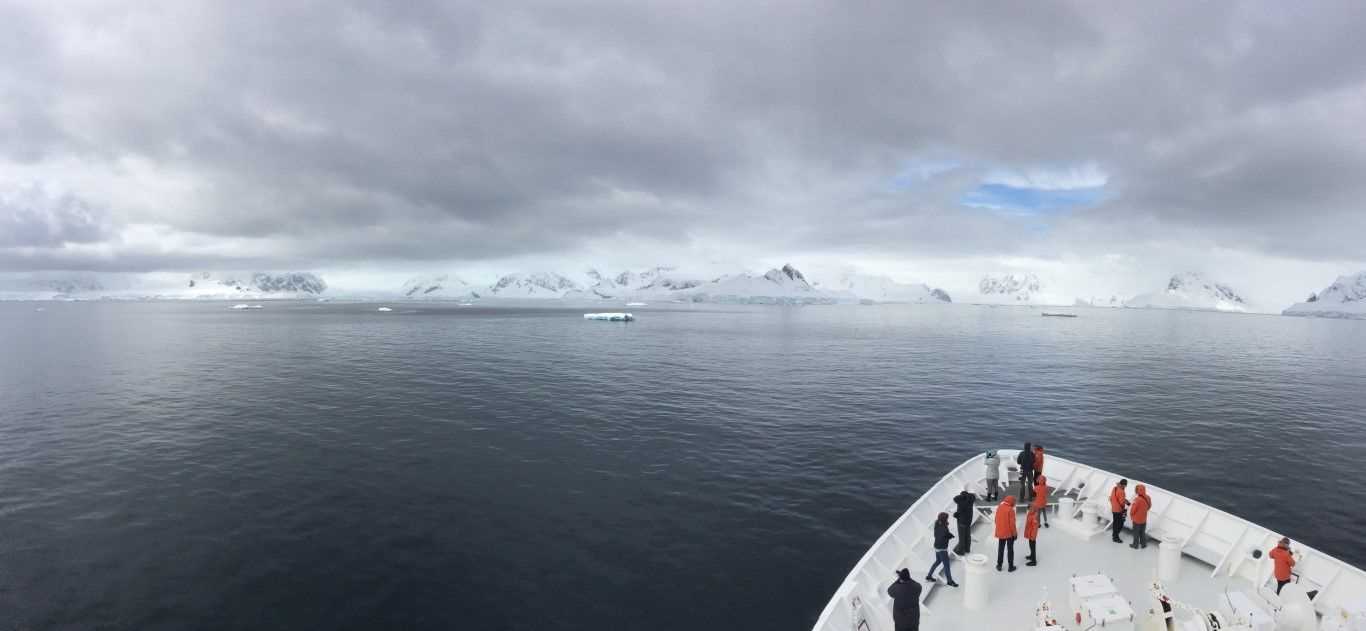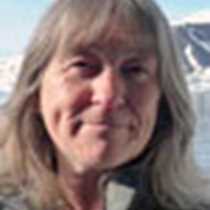Overnight we
Wilhelmina Bay was a beautifully sheltered inlet with glassy calm water, indolent icebergs and a stunning backdrop of rocky ice-covered peaks. Our approach was accompanied briefly by a humpback whale and her calf, followed by sightings of others in the bay beyond.
Soon we were crunching through the sea ice towards fast ice at the edge of the bay. The bridge team maneuvered the bow of National Geographic Orion into the ice, causing a couple of crabeater seals dozing nearby to look up with surprise, and arousing interest from a snow petrel. Then we were able to go for a walk on the sea ice, standing on more than 300’ of water under the frozen crust. But oh, the soft snow on top was deep, perfect for snowballs and snow angels, but challenging to plow through if we left the trodden line. The surrounding sea ice was on the move and a return to the ship became a good idea. Leaving this lovely bay, snow started to fall, and a magical seascape of ice and mist slipped away behind us.
Antarctic summer days are long, so after dinner was the perfect time for a continental landing at Neko Harbour, named after the Salveson whaling ship Neko that used the bay until 1924. Great excitement swept the dining room during dinner, however, as a group of large killer whales were in full view from the windows close at hand, feeding, and spy-hopping. Ashore we visited a colony of delightful gentoo penguins, getting to know our black-and-white friends as they walked and tobogganed up and down their penguin highways from the shore, sometimes with a treasured stone in their beak to add to their nest, while in the bay a humpback whale, a Weddell seal, and even a leopard seal were occasionally spotted.







